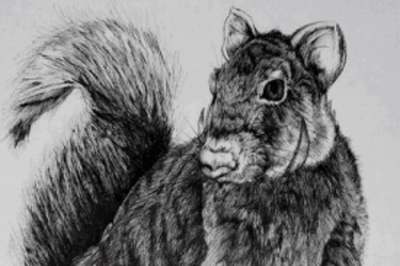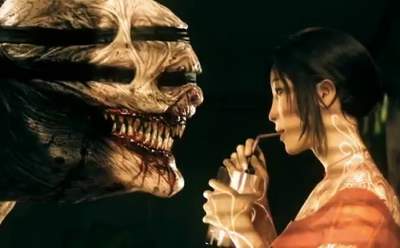 Illustration of medieval Zoological collections of articles.
Illustration of medieval Zoological collections of articles.
Medieval bestiaries – collections of Zoological articles, detailing the various animals in prose and verse, mostly allegorical and moralistic purposes – has been extremely popular works. They told stories not only about the existing flora and fauna, but also about fantastic creatures. Most of these bestiaries were published in the XII and XIII centuries, but it is interesting.
1. Jul

In the seventh century Isidore of Seville began an ambitious project. He decided to gather all the knowledge of mankind. The result of his work was the encyclopedia “Etymology”. One of its sections was devoted to animals, both known and existing only in rumor. So, he wrote about the animal, mentioned by the Roman poet Lucan, – an African flying snake Jul. According to Lucan, when akul hunting, he waits for prey in the crown of the tree. Once the snake has spotted a suitable victim, she threw an arrow at her from the branches. Also Jul was mentioned in the Aberdeen bestiary.
2. Caladrius

The story of the white bird caladrius is in many bestiaries. Something about this bird was similar to a goose a Swan’s neck. Caladrius had incredible healing properties. Droppings of this bird, as stated, was able to cure blindness when applied directly to the human eye. Pliny the Elder claimed that this bird (which he called icterus) was especially good in the treatment of people suffering from jaundice. The mythical bird was also able to predict whether the patient will recover. When caladrius landed on the bed of a seriously ill person and taken from him, it meant that person would die. If the bird was looking right at the face of the man she allegedly “pulled” from his trouble, after which he departed, and the patient was cured.
3. Beacon

Beacon was described by Pliny and was one of the main creatures in medieval bestiaries. Depicted as having the head of a bull on the body of the horse beacon also differed horns that were curved backwards. This creature was very unusual method of self-defense. When bonamano threatened, it is metal the enemy of the manure, which is not enough that terrible groin, and burned everything he touched. To date, it has been suggested that beacon actually was a large ungulates such as bison, and it is possible that this story appeared after the animal was scared to such an extent that she lost control of her bowels.
4. Dips

Lucan says dips was one of the 17 different species of snakes that were created when Perseus cut off the head of Medusa. Blood dripped from the severed head of Medusa, which Perseus took with him, thereby spreading snakes around the world. Dips appeared in the deserts of Libya. This snake was incredibly powerful poison, and victims of its bite gradually went mad from the pain as their flesh slowly burned. These snakes were cursed with endless lust. Lucan claimed that when his friend traveled in Libya, he came across a grave with a picture dipsy. Her fangs were immersed in the human foot, and a group of women Lila on the water in an attempt to stop the agony. The inscription on the tomb claimed that the man was bitten while trying to steal the eggs of the snake.
5. Amphisbaena

Amphisbaena – a poisonous snake with a head on each end that allows it to move easily in any direction. She has also added wings, legs and horn. The skin of this snake, according to rumors, is a potent cure for various diseases, but the Greek folklore claimed that if a pregnant woman stepped over a live amphisbaena, then it is almost guaranteed to have a miscarriage. Roman mythology claimed that if the amphisbaena to catch and wrap around the cane, it will protect the owner of the cane from the attacks of any creature. Isidore of Seville claimed that this snake’s eyes are glow in the dark, as the lanterns and wrote that it was the only snake that could hunt in the cold.
6. Leocrotta

This Indian-like creature on a horse, is a pure epitome of a nightmare. Polyolene-adaptation of the head of the horse had one alarming feature: a mouth from ear to ear. While leocrotta mouth was filled with teeth and serrated solid bone plate. This animal supposedly cleverly mimic human speech and shouted at night to lure unsuspecting victims. Pliny claimed that leocrotta was a descendant of the Ethiopian lions and hyenas. She was born with the power of a lion and the cunning hyenas and hunted in the wooded areas around the villages to people based on their curiosity.
7. Hydra

It was argued that the Hydra lived along the Nile river, where he scoured along the water in search of crocodiles. When this creature was discovered sleeping crocodile, it crawled into his mouth. Then it gnaws way through the insides of the reptile and ate her internal organs, at the end of gnawing way out of the belly of the crocodile. Isidore wrote about the Hydra even in the seventh century. Image of the Hydra vary: some bestiaries describe them as birds, while others show the Hydra in the form of a snake.
8. Moskale

Muscadet was first described in the bestiary, written by a mysterious figure by the name of Pierre de Beauvais. He claimed that he only translated the texts, but no one was able to determine that for the earlier work he translated. Among the animals in the bestiary have muscale — strange creature living in the trees. Pierre de Beauvais has described him as having the body of a small rabbit, the nose of the mole, the weasel ears and tail and paws of a squirrel.
Muscadet covered with stiff bristles of a pig and has the teeth of a wild boar. The animal is able to jump from tree to tree and emits so much heat that the leaves to which it referred, dry. The little creature burrows under trees, and kill anything you find under the tree.
9. Monoceros

Monoceros is a quirky kind of unicorn, which was found in all the bestiaries from ancient times to the middle ages. He had the body of a horse and the familiar long horns of an ordinary unicorn, but this beast was also the elephant’s legs and tail of a deer. Pliny gave this creature the tail of a boar and a deer head. The horn of Monoceros, it was argued, had all highly sought after properties that were attributed to the unicorn horn. Monoceros had a not so positive disposition, like a unicorn: he killed anyone who he met on his way. Also this kind of unicorn uttered a deafening, causing ice horror roar.
10. Salamander

Salamanders are very real, but salamanders in medieval bestiaries were creatures who not only can live in the fire, but was spitting fire. St. Augustine first wrote that salamanders are the epitome of the resistance of the soul, Hellfire, claiming that the power of the salamanders over the fire was proof that something mundane can face the fire of hell and will not be destroyed.
While early salamanders of ancient Persia were the symbols of divinity, salamanders of the medieval world were not only flammable, but poisonous. Salamander, which has fallen into the well could poison and kill an entire village.








